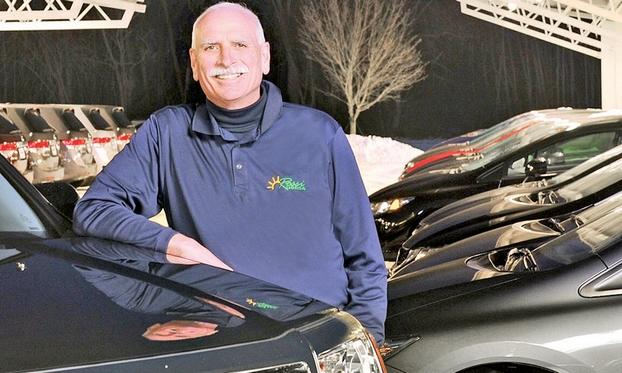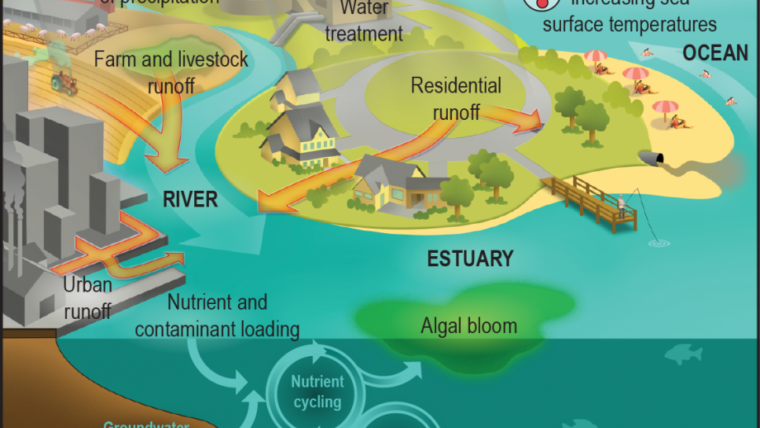The following is the 7th of the articles l am sending documenting that the transition from fossil fuels to a green energy economy is not some vague future pipe dream but is happening NOW. Personally coming from a career in the automotive business I am labeling these article as “Buckle Up” because the road ahead is changing fast. It could be bumpy but it will also be exciting. So, buckle up!——————————————————One of the major ways to combat climate change is to make all of our buildings carbon neutral. Buildings are the source of around 40% of CO2 emissions. By making all of our buildings carbon neutral we will dramatically reduce demand on our energy grid.The 40% emissions is from the CO2 emissions that are required to heat, cool, power and provide water/plumbing to our building stock. If we can eliminate that requirement by 2050 we will be well on our way to eliminating the worst effects of climate disruption.To accomplish this task, we will need to change building codes so that all new construction is carbon neutral. At the same time we will have to retrofit the rest of the building stock.Think that is beyond expectation??? Well think again because it is not some distant pipe dream. It is happening RIGHT NOW. Just read the following article and realize that if a car dealer in New Jersey can go carbon neutral why can’t we all?And in the process think of all the jobs and economic benefit that was created in this project.This is what we need to bring to greater scale, and it IS happening now, every day.[divider scroll_text=””]N.J. store cuts electricity costs by letting the sun in
Ron Rossi, owner of Rossi Honda in Vineland, N.J., stands amid the new vehicles on his lot. A canopy of solar panels covers the inventory.Automotive NewsFebruary 17, 2014 – 12:01 am ETRon Rossi has always looked for efficiencies in his workplace.
Back in the 1970s, fresh out of engineering school, he helped institute energy-efficiency measures at two supermarkets owned by his family, such as reclaiming the heat thrown off by the air conditioning and refrigeration system, and installing timers and motion sensors to cut power use.
Now owner of a Honda dealership in southern New Jersey, Rossi is still at it.
By installing a canopy of 900 solar panels that covers and illuminates the dealership’s new-car inventory, along with other energy-saving measures, Rossi Honda in Vine-land, N.J., claims to be first U.S. car dealer to be “electric grid neutral.” That is, over the course of a year, Rossi Honda produces more electricity on site than it consumes from the utility grid.
The long-term benefits of converting his store to solar power are not only ecological but also financial, Rossi says.
“I felt it was an important statement to make,” the 63-year-old Rossi said. “Selling cars, the bottom line has been getting skinnier because of the Internet and regulations. We have to get our efficiencies in line.”
“It’s pretty simple math, and I’m a math guy,” Rossi adds.
The upfront investment wasn’t cheap — nearly $1.3 million. But Rossi figures that the solar panels will have paid for themselves in five to seven years. After that, for the 25-year life cycle of the array, Rossi figures he’ll make $2 million in net profit. This for a dealership that sells about 1,000 new Hondas and 400 used cars annually.
In addition to his electricity bill being zero, Rossi gets solar renewable energy certificates from the state of New Jersey, credits that can be sold on the open market. Amortization of the system through write-offs also cut about 30 percent off Rossi’s capital cost of installing the panels. Plus, the solar panels feed three high-wattage chargers for electric vehicles, an attractive customer benefit.
Rossi says using solar energy in the chilly Northeast may seem counterintuitive, but solar energy experts say cooler temperatures can work better for solar energy production, as heat degrades the efficiency of the panels.
The short, overcast winter days don’t help much. Rossi’s panels work best in the spring and fall — resulting in the “net zero” equation. There will be months when Rossi pulls power from the grid, and months when his panels feed the grid.
Rossi Honda generates 223,000 kilowatts of power from its solar array. The dealership also put cost-saving LED lighting around the periphery of the parking lot for nighttime security. Underneath the solar canopy, motion-sensitive high-efficiency fluorescents illuminate the area. There are also hot-water heaters located close to the bathrooms, to save on water-heating costs.
As a result of the measures, the dealership reduced its annual grid electricity consumption by approximately 321,000 kilowatt-hours and its annual carbon dioxide output by approximately 341,000 pounds.
“It’s all about efficiencies, not just directly applied to a dealership but any business. If you can make yourself more efficient or save money, it’s good for business,” Rossi said.
Rossi bases that conclusion on decades of experience. He graduated from the New Jersey Institute of Technology in 1973, in the thick of the Arab oil embargo, and went to work cutting down energy consumption at his family’s two ShopRite supermarkets, which together measured 75,000 square feet and employed 450 people.
The low-hanging fruit was to reclaim the heat thrown off by refrigeration units through manifolds and pump it into the supermarket. He also tore out the oil-burning heaters in favor of natural gas, and put nonessential power on timers and motion sensors to shut off at night or when not in use.
Later, he got involved in building shopping centers, offices and liquor stores. He proudly describes one liquor store he engineered as “a giant Styrofoam box,” because of its 4 inches of insulation in the walls. With positive-airflow vents keeping the outside air from coming in, the store used hardly any heating gas or air conditioning.
Rossi moved on to car dealerships in 1990, and acquired his Honda store in 2000.
For help with the energy upgrades, Rossi consulted with American Honda’s Environmental Business Development Office, which was formed in 2011. Steven Center, vice president of the group, said about 300 Honda dealers are performing various green projects to lower their costs while also lowering their environmental impact. In addition to solar panels, dealers are involved in water reclamation and energy audits.
“A businessperson is always looking to spend less and make a better long-term decision,” Center said. “If the $1,500 bulb, long term, costs 1/5000th of the $40 bulb, then it makes a lot of sense. Older dealerships are just eating electrons. These changes are not inexpensive, but the payback is really quick.”
Rossi says he appreciated having Honda’s advice on some parts of the greening of his dealership. Researching and obtaining cost estimates for green programs can be time-consuming and expensive. Honda’s national reach allows it to have experts in areas such as water reclamation for the car wash; Honda also can get better pricing for harder-to-find items.
“We want to reduce Honda’s CO2 footprint,” Center said. “We want to focus on energy reduction, and the ultimate is not using any energy at all. Even if you don’t believe that CO2 is bad, you must certainly believe that saving money is a good thing. Either way you win.”
You can reach Mark Rechtin at mrechtin@crain.com.
— Follow Mark on Twitter



